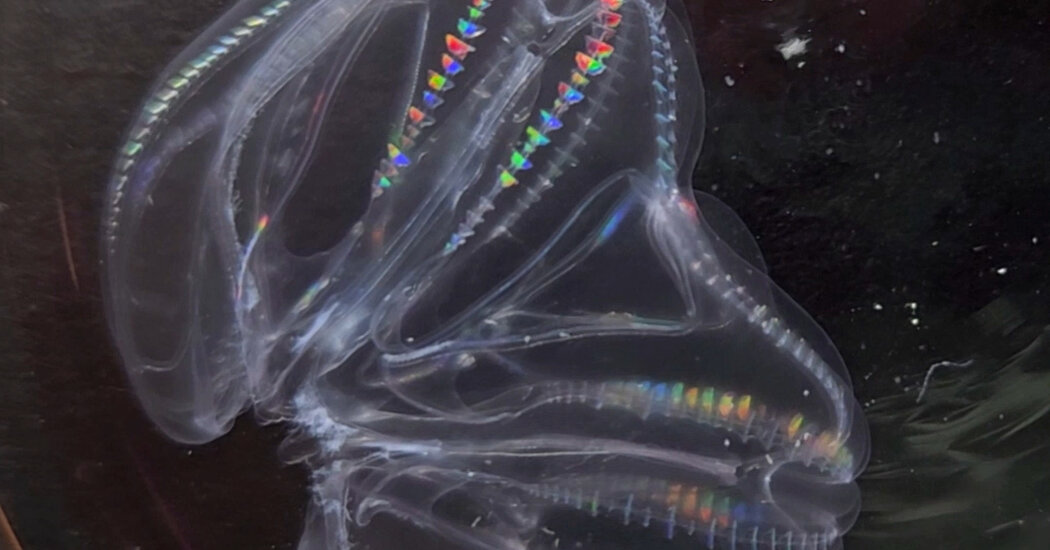Comb jellies, the delicate bells that pulse their iridescent bodies through the ocean, are some of the strangest creatures on earth. “They are the aliens of the sea,” said Leonid Moroz, a neuroscientist at the Whitney Laboratory for Marine Bioscience in St. Augustine, Fla.
The aliens belong to the oldest branch of the animal family tree. They split from the ancestors of all other living animals about 700 million years ago and have traveled down their own odd evolutionary path ever since. Studies by Dr. Moroz and others suggest that comb jellies evolved their own nervous system, as well as their own muscles and digestive tract — complete with two anuses.
But a study published on Monday makes clear that scientists have barely begun to understand the creatures’ bizarre biology. Researchers found that a pair of unrelated comb jellies can spontaneously fuse together into a single body. This surprising ability is not only raising more questions about these ancient animals, but also giving clues about the evolution of our own immune system.
“It opens a Pandora’s box — a good Pandora’s box,” said Dr. Moroz, who was not involved in the research.
The box was accidentally opened by Kei Jomura, a biologist who studies comb jellies, also known as ctenophores. Last summer, Dr. Jomura traveled to the Marine Biological Laboratory in Woods Hole, Mass., to study how comb jellies use light to navigate.
Each day he strolled down to the seaside and netted golf-ball-size comb jellies belonging to a species known as Mnemiopsis leidyi, or sea walnuts.
